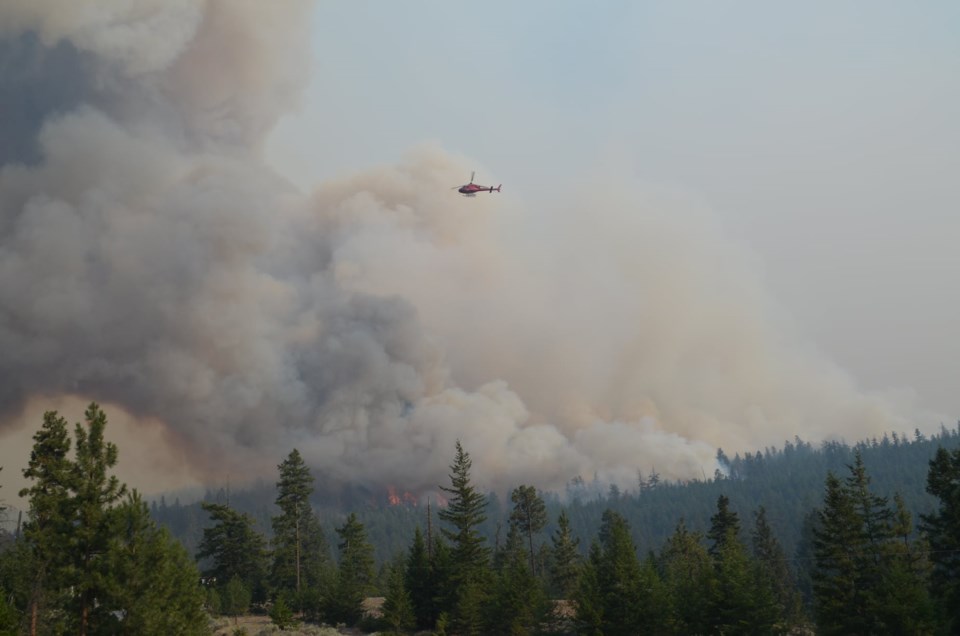With currently raging across the province, many British Columbians have been put on evacuation order or evacuation alert.
As of 7 p.m. July 22, there are 5,084 homes under evacuation order and 17,489 under alert, according to Emergency Management BC.
But what do those two notices entail exactly?
Evacuation alert
If an evacuation alert is issued for your property, you should be prepared to leave your home on short notice.
An emergency grab-and-go bag is a must. Make sure you pack several days' clothing, any medication you may need, comfort items for children (like a favourite toy or colouring book), and leashes, carriers and food for your furry companions.
Part of your emergency kit should include important documents like insurance and birth certificates (). Keep these bags in your vehicle and at your workplace if you can.
Consider collecting precious photos and mementoes that cannot be replaced.
Also, check in on any family, friends or neighbours who may need a helping hand due to mobility or other issues.
"Another thing to consider is to always make sure your vehicle's tank is at least halfway full. The last thing you want during an evacuation is to realize that you don't have enough fuel to safely drive out of the affected area," writes government spokesperson Leah Holoiday in an email to Glacier Media.
Being prepared also means having an emergency plan: choose a meeting place ahead of time where everyone can reunite (those in your household might not all be at home and together when disaster strikes). Pick one spot close to your home and an alternate spot away from your neighbourhood.
"We want to reiterate the importance of taking the time to prepare in advance of these types of scenarios, especially as we head into an active wildfire season," she says. "It's important to have these conversations with your household, as well as with your other friends and family."
Evacuation order
If your property is placed on evacuation order, you must leave immediately.
When an evacuation order is issued, wear a long-sleeved shirt, long pants and sturdy shoes to help protect from unforeseen hazards.
Gather your loved ones or go to the muster point. And of course, take your pets with you.
"Because pets are not permitted in public shelters, follow your plan to go to a relative or friend's home, or find a pet-friendly hotel," states a provincial press release.
Don't forget to close all doors and windows, plus any gates (don't lock them). If there's time and it's safe to do so, shut off water at the main line into your home and switch off electricity at the breaker panel. Leave the natural gas "on."
Get that grab-and-go bag and follow the directions to the identified reception centre. (Don't take shortcuts as it could lead to a blocked or dangerous area.)
If going to an evacuation centre, sign up at the registration desk so you can be contacted or reunited with family. The province recommends contacting your out-of-area emergency contact to let them know what has happened, that you're alright and how to contact you. Alert them to any separated family members.
If you're an evacuee, you're encouraged to . Local authorities will advise when it's safe to return home.
"In such stressful circumstances, the most important thing to remember is to stay calm, listen to local public officials, and if possible, access online social media channels like , the or your local government website for information updates," the release continues.
What if someone in my household doesn't want to evacuate?
Holoiday says receiving an evacuation order can be an emotional experience.
"You may be reluctant to leave your home and community. However, choosing to remain in an area that is under evacuation order puts yourself, your family and first responders in danger," she says.
That danger could include evacuation routes changing or becoming impassible; services, utilities and businesses that you rely on daily may be shut down; and help may not be able to reach an evacuated area because of the risk to their own safety or access is blocked.
"It's not worth the risk to stay behind."





